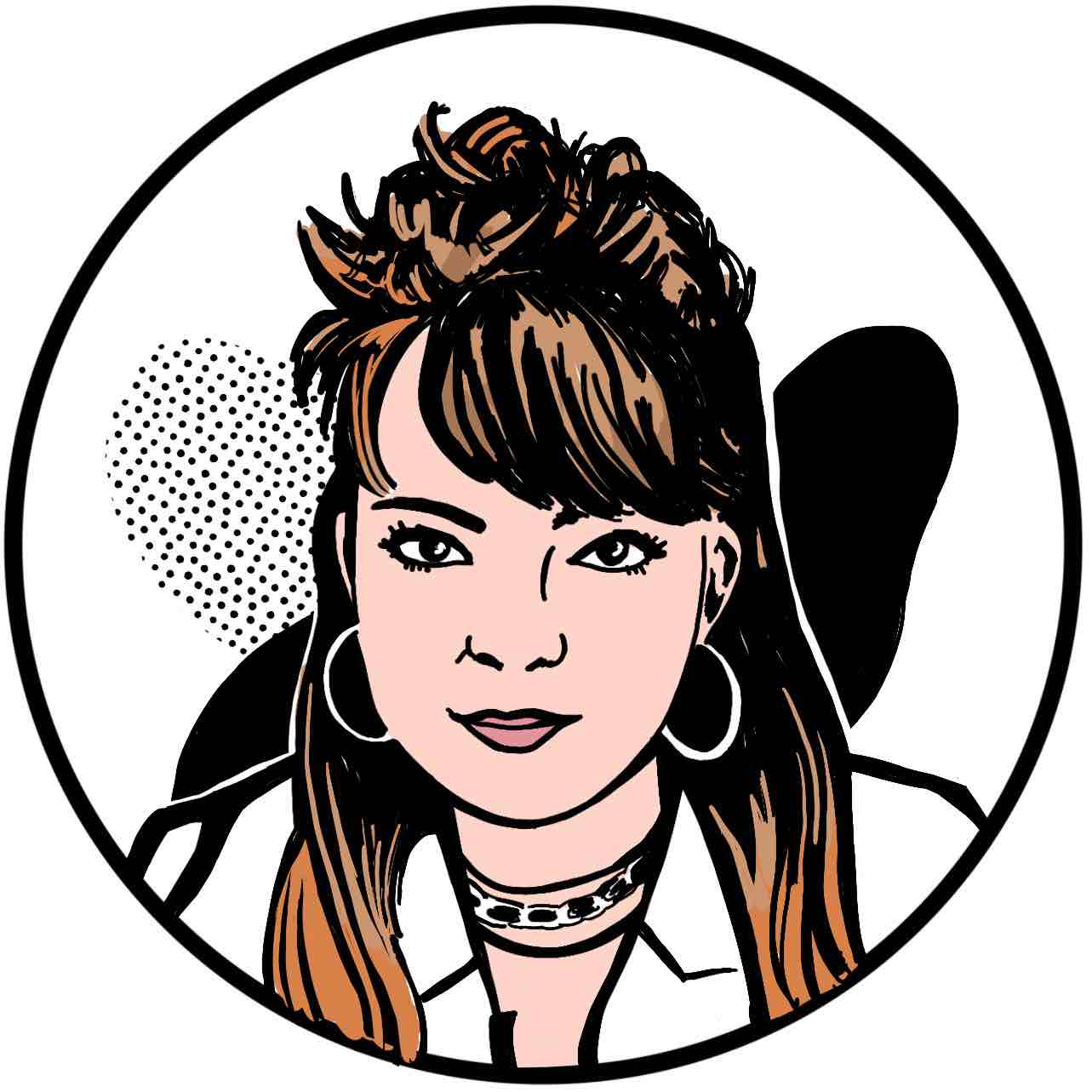
The first thing I noticed on a fall 2020 visit to Twelve Percent Beer Project’s taproom was color—bright and abundant color. Rows of silver tables stood on blacktop in the parking lot-turned-suburban beer garden, sun bouncing off every surface, and each guest seemed to be sipping candy-colored flights of Omnipollo’s Bianca Lassi Goses.

Many of those visitors were sporting hypebeast beer merch to match. One patron wore a pink Permanent Hangover sweatshirt with pink overalls; when they sat behind their Blueberry Maple Chocolate Peanut Butter and Raspberry Maple Pancake Lassi Goses, the Instagram caption almost wrote itself. All around me, photos were being taken of those vivid glasses.


More than your average brewery or beer bar, the atmosphere was distinctly thirsty—and I don’t mean parched. I mean beer influencers, rating-app tickers, and dedicated nerds flocking to a nondescript industrial park to get their hands on hotly sought-after releases—and telling the world they were doing it. In addition to Omnipollo, Twelve Percent Beer Project partners with breweries the likes of Fat Orange Cat Brew Co., Evil Twin Brewing, Abomination Brewing Company, Hoof Hearted Brewing, American Solera Brewery, and Stillwater Artisanal Ales to brew their recipes and/or distribute the finished products. During that 2020 visit, the tasting room felt like a hype house of contemporary craft beer. The truth, of course, is a little more complicated than that—and as it turns out, a bit more earnest, too.
BELGIAN BEGINNINGS
Twelve Percent Beer Project’s co-founders are Brian Ewing, Ashley Van Valkenburgh, Alex Blank, and Bridget Blank; Ewing and Van Valkenburgh are spouses who met through a mutual friend in Norwalk, Connecticut, not far from Ewing’s hometown of Stratford. Ewing met the now-married Blanks gradually between 1998 and 2000 when all three were working in marketing for a company called MBI Inc., also in Norwalk. Over time, the four friends developed a shared interest.

“We started getting into hardcore Belgian beers around 2003,” Alex Blank says. “I remember sitting at d.b.a. drinking Chimay White and concocting trips to Belgium.” It was before the craft beer boom had indeed boomed, and dedicated beer bars were still few and far between, even in Blank’s native New York City. Becoming a Belgian beer obsessive required research and commuting, but Ewing didn’t mind those hurdles.
“It was most of all Brian leading the charge on loving Belgian beers,” Bridget Blank tells me on a phone chat with Ewing. “I did love beer but Brian and Alex really had this obsession—I enjoyed it but I wasn’t researching it like them.”
Ewing’s epiphanic discovery came at a now-shuttered restaurant called Cafe de Bruxelles in the Park Slope neighborhood of Brooklyn, where he had moved with wife Van Valkenburgh while she attended law school.
“I had my first Duvel and my first La Chouffe, and my mind was blown,” Ewing recalls. “I instantly fell in love and needed to know how to find this stuff.” The next day, Ewing says he “raided the Belgian beer counter” at an also-defunct craft beer shop, Bierkraft. This led to Ewing, Van Valkenburgh, and the Blanks taking trips to Belgium together—though Ewing and Van Valkenburgh’s visits became much more frequent.
“I dragged [Ashley] every chance I got,” Ewing says with a chuckle. “Like four times a year. This was before GPS, and we’d hunt down these tiny breweries that, five miles outside of their towns, no one had heard of, let alone back here in the U.S.” These trips also predated liquid restrictions on planes, and Ewing remembers hauling cases of beer back to Brooklyn. The level of “hobby” had been surpassed. “Ashley said, ‘You’re either starting a business, or we’re not going back to Belgium.’”

Ewing took the note. He scraped together his savings and, while maintaining a full-time marketing director job, launched a beer import business.
“Now the culture is, ‘I’m really into beer, so I’m going to open a brewery,’” Blank says. “But back then—the company is 13 years old—[that] wasn’t as common.”
It was also a different dream. Essentially, the goal was to get those revelatory European beers into more hands in the U.S. Ewing had built relationships with Belgian brewers during his travels, and started gracing American drinkers with overseas gems through his distribution company, run out of his own car.

Ewing’s was a passion-driven side hustle, one that soon encountered another crossroads: give it up or go full-time. So Ewing went all in. Within a couple of years, the distributorship—named Twelve Percent Imports for the ABV of the first beer Ewing ever imported from Belgium, ’t Gaverhopke Extra—needed a whole team. Alex and Bridget Blank joined Ewing and Van Valkenburgh, and the friends’ downtime activity officially became serious business.
A BEER BUSINESS IN THREE ACTS
Importing Belgian beers was the first of what Blank describes as Twelve Percent’s three phases. While the business still imports Belgian beer brands like Tilquin, its primary focus evolved into partnering with nomadic breweries, most of them American, around 2009.
“A couple of years after I started [Twelve Percent Imports], I went to a beer-tasting event in Baltimore,” Ewing says. “The beer writer Chuck Cook told me I needed to try this thing he had. I did, and it was a Belgian Lambic-type thing, in this bottle without a label on it. I was blown away, and asked, ‘Who is it?’ assuming it was something rare like Cantillon, and Chuck said, ‘No, it’s this homebrew by a guy just down the street here.’”
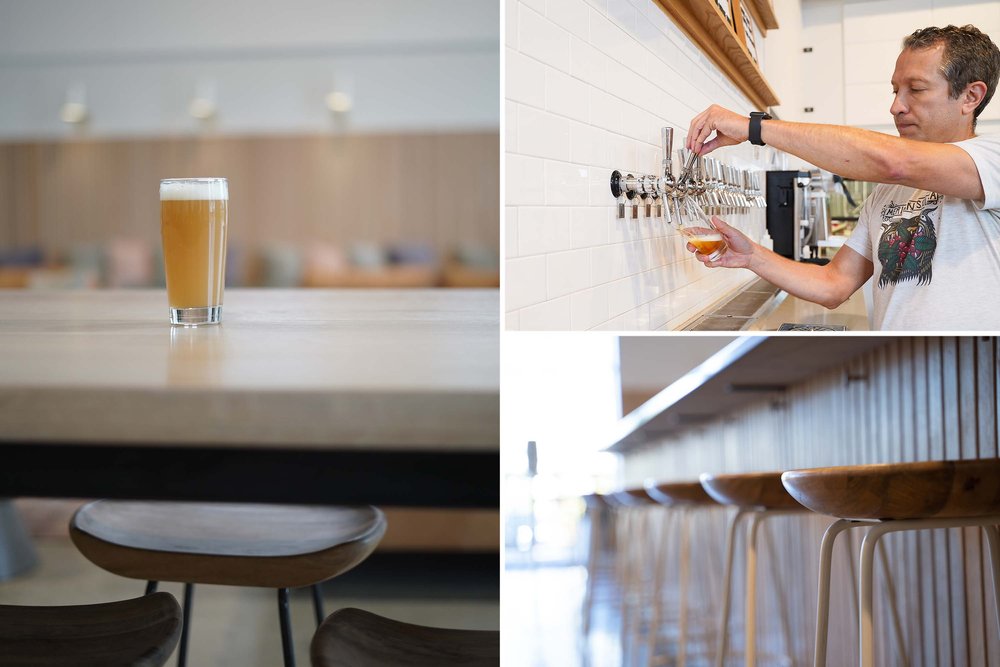
That “guy” was Brian Strumke, then about to establish Stillwater. Ewing and Strumke became fast friends and started visiting Belgium together, where Strumke would brew at Belgian breweries and Ewing would then distribute that beer stateside. Eventually, Ewing helped Strumke find a more permanent spot to brew in the U.S.
Bridget recalls that, between 2009 and 2010—as she was learning the business in order to helm all things financial for Twelve Percent—Ewing had also started conversations with Evil Twin founder Jeppe Jarnit-Bjergsø and Westbrook Brewing Company’s Edward and Morgan Westbrook. Soon, Twelve Percent was moving into its second phase. Ewing had discovered beers as exciting as those Belgian imports right in the U.S., and just as his co-founders had been motivated to get special Belgian beers into more hands, now they wanted to do the same for American nomadic breweries.
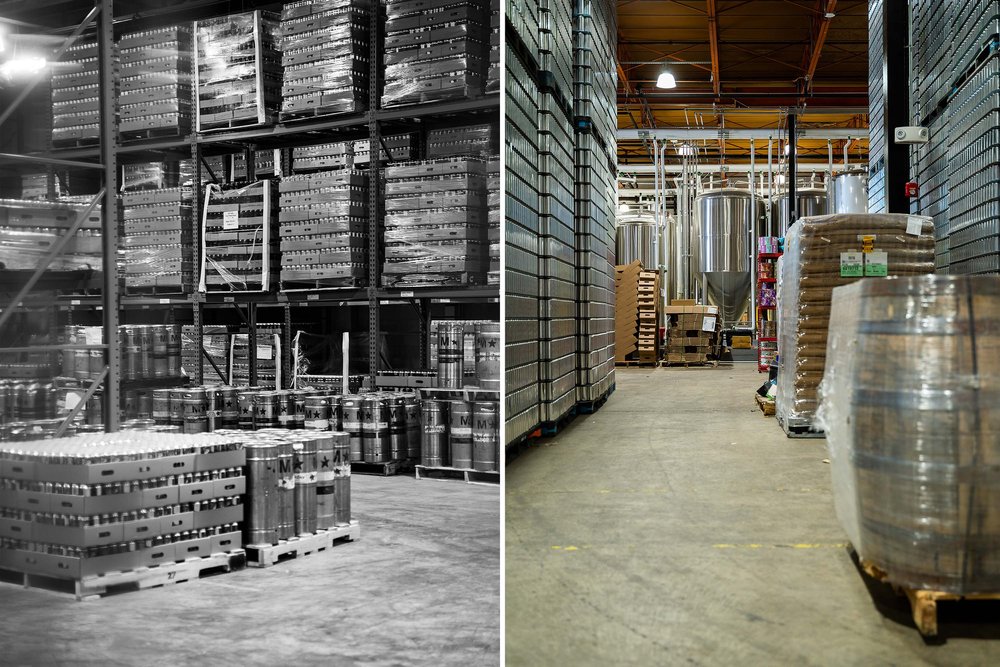

During that time, the U.S.’s current craft beer culture was starting to take shape. 2008 began an eight-year period during which the number of breweries across the country grew sixfold. As it became more common for Americans to live within easy driving distance of an independent, neighborhood brewery, something that had been bubbling up since the late 1970s in pockets like Northern California and New England finally took hold on a national stage: The thirst for local beer. Momentum from heralded beers like The Alchemist’s Heady Topper, debuted in 2004, and Russian River’s Pliny the Elder, born in 1999, joined with the increasing availability of domestic craft beer. Consumers’ attention started to shift from Belgium and Germany to their own backyards.
These relationships tend to happen organically. We’re introduced to a brand or beer in some way, and our eyes light up and we think, ‘Boy, there needs to be more of this in the world.’ We [speak] with whatever brewery we happen to be talking about, and if we’re all enamored with the idea of what we can bring to the table and it feels right, then they become part of the family.
Twelve Percent recognized this change and adapted, scaling down its import operation in order to partner with American breweries and help them reach wider audiences. Even when it came to brands like Evil Twin, Blank says the Twelve Percent team realized how much more efficient it would be to brew founder Jeppe Jarnit-Bjergsø’s recipes domestically, instead of bringing in small batches that were made at sites all over Europe. And so, Twelve Percent made facilitating its partners’ contract brewing needs core to its operation. After originally setting up Stillwater with a location in Maryland, Ewing, Van Valkenburgh, and the Blanks developed a partnership with Two Roads Brewing in Stratford, Connecticut, which had the bandwidth and space to contract brew Twelve Percent’s burgeoning portfolio.
Soon, though, the Twelve Percent team upped their involvement in production further still, stepping into the company’s third phase by building their own brewhouse for all of that contract work. Twelve Percent Imports became Twelve Percent Beer Project to more accurately reflect the company’s functions.



“The prices were better and we could control quality,” Blank says. It was frustrating, he recalls, to know what their brewery partners were capable of, but then receive inconsistent batches because contract brewing teams were the ones in charge of producing those recipes. Bringing those brewing operations in-house, under one roof, provided an element of cohesive, organized oversight that yielded quality and, importantly, consistency.
Construction on the brewery started in 2017, coinciding with the fever pitch surrounding American craft beer’s new pastime: Line life. Munster, Indiana’s 3 Floyds Brewing is credited with catalyzing the movement in 2002 with its Dark Lord Imperial Stout. From there, breweries like Chicago’s Goose Island Beer Company, Brooklyn’s Other Half Brewing, and Trillium Brewing and Tree House Brewing Company, both in Massachusetts, commodified the concept of rarity in beer. Big, bold flavors got attention, and if those bourbon barrel-aged Stouts and double-dry-hopped Hazy IPAs were made in limited quantities, beer enthusiasts’ need for them only became more urgent. The ultimate cachet for a craft brewery was to be hyper-local and churn out the kinds of beers that stopped Instagrammers dead in their scrolls; the ultimate cachet for a craft beer consumer was to be able to boast scoring some rare Stout, Sour, or IPA from a tiny brewery 12 states away.

Twelve Percent Beer Project already happened to be working with breweries that garnered cult followings with their creative releases and limited supplies, including Stillwater, Evil Twin, and Omnipollo. Now, a whole new crop of small breweries across the U.S. had the potential to cultivate a national presence and meet consumers’ escalating fervor. With breweries like Fat Orange Cat in East Hampton, Connecticut; Decadent Ales in Mamaroneck, New York; and Abomination in Pittsburgh, Pennsylvania, Twelve Percent grew a tightly curated portfolio and fully stepped into its unique position as a distributor-cum-brewery.
HITMAKER
Blank says the team checks for three major factors when deciding who to partner with: high quality; innovation; and a real, recognizable brand identity. Partnerships are born out of mutual friendships and longtime admiration, rather than the pursuit of any given brewery that seems to be trending.
“These relationships tend to happen organically,” Ewing says. “We’re introduced to a brand or beer in some way, and our eyes light up and we think, ‘Boy, there needs to be more of this in the world.’ We [speak] with whatever brewery we happen to be talking about, and if we’re all enamored with the idea of what we can bring to the table and it feels right, then they become part of the family.”

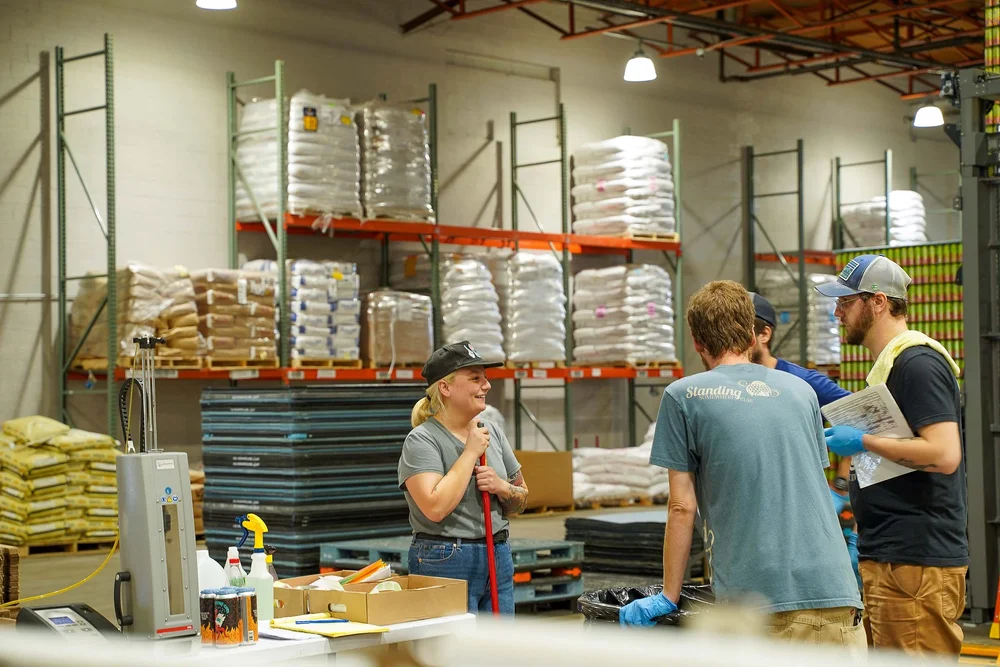
This metric for deciding which partnerships to pursue doesn’t just drive at authenticity. It’s necessary from an investment perspective—Twelve Percent’s business model of production and distribution makes the stakes too high to team up with any flavor-of-the-week brewery.
“The risk is all on us, so we have to be excited about a brand to start working with them,” Bridget adds. “We’re going to be paying to make that beer and we have to sell that beer to make money.”
Twelve Percent has a unique relationship with its partner breweries, she adds. “We’re not a contract facility in the terms of that someone can come and use our brewhouse and then they’re back on their own. We spend a lot of time and effort thinking about our brands. They’re hustling really hard and they have the four of us to think about the best strategies and brand development for them. It sounds cliche, but I do think of ourselves as all on the same team as our breweries.”
They’re like a record label. They’re picking these breweries and saying, ‘Come to our facility, brew your beer, and we’ll help you scale.’ They have this eye for who’s up-and-coming, and they’re creative—they’ll let breweries focus on the product and help them get better artists for their cans, and guide them toward whatever helps them grow their mass appeal.
Twelve Percent was still in its pre-brewery phase in 2016 when Ewing stopped by the home of Paul Pignataro on a tip that he was brewing up some interesting experiments. Pignataro had recently left the world of finance to establish Decadent Ales. He was a regular at craft beer bar Tørst in the Greenpoint neighborhood of Brooklyn, co-owned by Evil Twin’s Jarnit-Bjergsø and wife Maria, along with chef Daniel Burns at the time. Ewing consulted on Tørst’s beer program, and when the bar’s staff found out Pignataro was starting a brewery, they put his beer on tap and passed on the praise to their bosses. Soon, Ewing and Jarnit-Bjergsø were in Pignataro’s basement sampling his 13 recipes.
“They said, ‘These are great, but do you have anything we can try that we’ve really never had before?’” Pignataro tells me on a call while he drives to Decadent’s Mamaroneck, New York taproom. Early this September, Hurricane Ida all but destroyed Decadent’s facility, and Pignataro was about to find out if the brewery could even get power back to start the rebuilding process. (A month later, he was able to welcome patrons back with a soft opening.)

Decadent’s fanbase is strong, and it started when Pignataro decided to let Ewing and Jarnit-Bjergsø try an experiment he was still concocting. At the moment they asked for something totally novel, he happened to have marshmallow cooking upstairs to add to a beer later. It was a hit with his visitors, and Ewing decided that Decadent’s more striking releases, like a marshmallow IPA and a creamsicle IPA, had the kind of allure that would make them sought-after as far as California. Decadent Ales joined the Twelve Percent family, and Pignataro credits Twelve Percent with helping the brewery hit the ground running with national attention.
“That kind of brand recognition so early on was crucial,” Pignataro says. “They got our beer out to California, Ohio, Florida, Chicago—all these major beer markets we couldn’t have done otherwise on our small system. They put eyes on our brand because of the respect their other breweries had.”

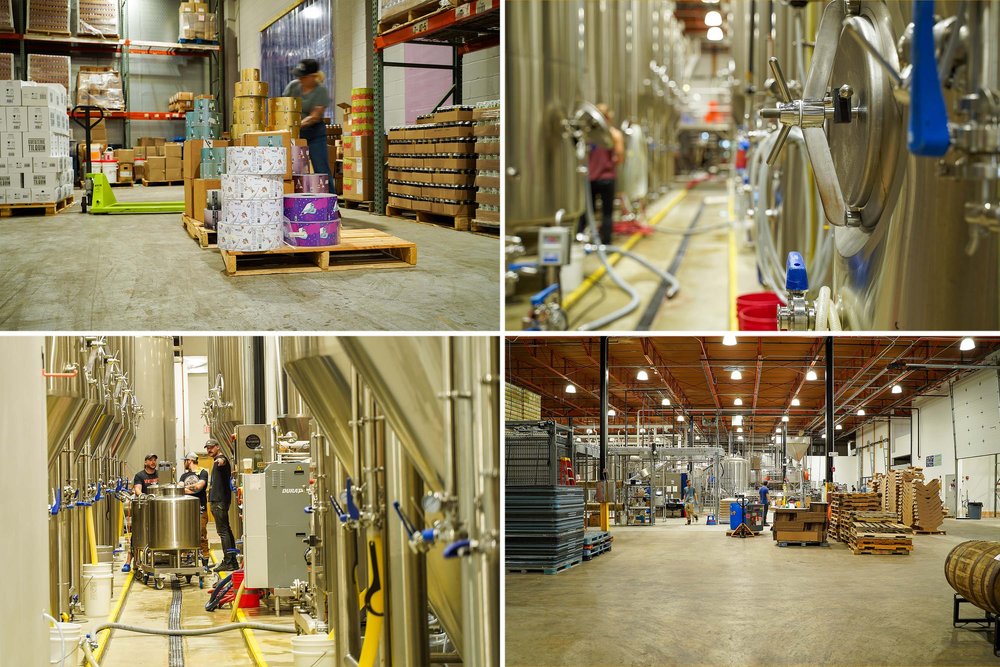

Currently, Twelve Percent only handles distribution for Decadent; brewing is done in-house in Mamaroneck. When asked to describe how Twelve Percent operates and how its brewery partnerships feel different from other distributors, Pignataro uses an analogy one hears a lot when discussing the company.
“They’re like a record label. They’re picking these breweries and saying, ‘Come to our facility, brew your beer, and we’ll help you scale.’ They have this eye for who’s up-and-coming, and they’re creative—they’ll let breweries focus on the product and help them get better artists for their cans, and guide them toward whatever helps them grow their mass appeal.”

Twelve Percent helped Fat Orange Cat develop its recognizable aesthetic by introducing owners Mike Klucznik and Sheila Mullen to Richmond, Virginia-based artist Leslie Herman. Herman would go on to cement FOC’s consumer appeal with memorable can art. The partnership was organic; even though Blank connected the brewery and the artist, Mullen says Herman signed on to work with FOC after really falling for the brand.
Klucznik and Mullen never had visions of being a nationally known brewery, and on their own, they prefer to keep things small. The couple started the business in 2016 while working other jobs full-time; they continue to brew small batches on their one-barrel system in East Hampton, Connecticut. The brewery’s taproom had been a huge local draw on weekends—so much so that, following a consistent level of commotion, Klucznik and Mullen decided to make the space kid- and pet-free in 2019. Now, in 2022, the brewery’s only public interaction is via drive-through can sales. The space is also where the couple live, and they seek a bit of peace and quiet amid the consistent clamor for their beers.

Twelve Percent brews FOC’s large batches, essentially allowing the brewery to continue growing nationally as a brand while Klucznik and Mullen maintain their own humble operation. Blank discovered FOC through a mutual friend at a fortuitous time for the partnership to spark, Mullen says.
“We were outgrowing our space and getting bigger, but we didn’t want to lose our vibe here. [The partnership] was the perfect model to maintain our space here but grow bigger through Twelve Percent.” Like a singer-songwriter working with a label—in a perhaps idealized version of the music industry—FOC gets to stay scrappy and creative, while Twelve Percent helps with marketing, scaling up production, and wide-reaching distribution.
CURATED, COLLABORATIVE, COLLECTIVE
Joe Feldman credits Twelve Percent, too, for helping get the brand he co-owns with Josh Arno off the ground. The two founded Abomination Brewing Company in Pennsylvania, but in 2018, negotiations for a brewing facility fell through and they found themselves in need of a contract brewer. Feldman says he only knew of Twelve Percent via social media, for its partnerships with Evil Twin, Omnipollo, and Stillwater, and messaging them about working with Abomination was “a shot in the dark.” That shot worked, though, and Abomination steadily rose from seven-BBL batches to 60- and 90-BBL batches at Twelve Percent’s facility, with distribution in 32 states, plus some international releases.

It helps that Abomination already had its eye on the zeitgeist. The brewery dreams up nostalgic, enticing beers like double pastry cheesecake Stouts and astronaut ice cream Milkshake IPAs, and its aesthetic is distinctive, courtesy of artist Sam Heimer. Working with Twelve Percent proved to be the integral step to translating that star power into nationwide sales—both because of the sheer logistical advantage of harnessing Twelve Percent’s brewhouse and team, Feldman says, but also due to the unique way this business operates.
“Twelve Percent is more of a brewery ‘collective’ than it is a normal contract facility,” Feldman says. “Because they’re selective of the brands that they work with, it protects their brand and ours. We work alongside some of the best brewers out there, and we all put out killer brews so when people see ‘Twelve Percent’ on their can, they know it’s gonna be a banger. Even if they haven’t heard of that brewery before, they can trust the Twelve Percent name.”
There’s something to be said for a distributor and contract brewery that’s as famous, if not more so, than its breweries. Twelve Percent’s following consists of an audience eager to try any breweries the business signs onto its roster.


That means there’s even room for Twelve Percent to help a brewer build their brand from scratch. Zac Ross is the company’s head brewer. After helming Aslin Beer Co.’s barrel program in Virginia, the Twelve Percent role brought Ross back to Connecticut, where he had previously brewed at Kent Falls Brewing Co. While Ross leads Twelve Percent’s production across its brewery partners, he has also tapped into the company’s resources and launched his own brand, Marlowe Artisanal Ales, named for his late grandfather. Marlowe’s first beer debuted in November of 2019, timed for Ross’ grandmother’s 90th birthday.
Under his own brand, Ross focuses on low-ABV beers. His hoppy Blonde Ales, Pale Ales, ESBs, and Lagers have drummed up significant buzz because of their artful balance, not to mention the cans’ idyllic artwork—the brand’s logo is Ross’ grandfather’s signature from a piece of music he had composed for the wedding of Ross’ parents. The buzz has also been helped, no doubt, by Twelve Percent’s name, and valuable opportunities like collaborations with other in-demand breweries that come via both Twelve Percent and Ross’ own sterling resume.

“[Twelve Percent] fund[s] everything and handles the distribution side of the brand,” Ross says. “It’s like an incubator for brands to grow and not be under such restrictive terms … You can be creative. I get to focus on marketing and the production side of things while other aspects are taken off my plate. It’s great to be able to start something without having that immense amount of pressure to focus on everything at the same time.”
Twelve Percent is more of a brewery ‘collective’ than it is a normal contract facility. Because they’re selective of the brands that they work with, it protects their brand and ours. We work alongside some of the best brewers out there, and we all put out killer brews so when people see ‘Twelve Percent’ on their can, they know it’s gonna be a banger. Even if they haven’t heard of that brewery before, they can trust the Twelve Percent name.
Twelve Percent performs a different combination of services for almost every brewery it partners with, letting the partners work to their strengths and offering support where partners feel they need or want it. Brand new breweries can launch; established beer brands can scale up production and reach consumers in different regions.
That’s a lot to juggle for a company whose brewhouse has only been up and running since 2019, which could explain why Blank is still not sure how he would categorize Twelve Percent. It’s another reason why the company’s brand portfolio may seem small compared to other, more straightforward distributors who don’t brew. Blank says the tight curation is necessary to guarantee every brewery partnership the level of quality they expect.


To get all of that beer out the door, Twelve Percent has a brewhouse staff of about 15-20 people. There are usually over 30 beers in the tanks at any given moment. Blank says that an eventual goal would be to have team members able to follow one beer from start to finish, but for now, keeping up with the sheer volume of output means workers are divided by tasks, from brewing to cellaring to packaging.
Still, the opportunity to work on so many different kinds of recipes from a handful of distinctive breweries is an enticing challenge. Carla Waclawski made a name for herself in New England’s brewing scene while at Fat Orange Cat before joining Twelve Percent’s team. She says Mullen and Klucznik were supportive of her decision and excited for her to explore the new opportunity, where she gets to apply her skills to a bevy of different breweries without losing touch with FOC’s production. There’s also the opportunity to flex other talents: Waclawski is the artist behind some of Marlowe’s can labels.
STRAIGHT FROM THE SOURCE
One could argue that Twelve Percent Beer Project has now entered a fourth phase with the opening of its taproom: destination beer bar.
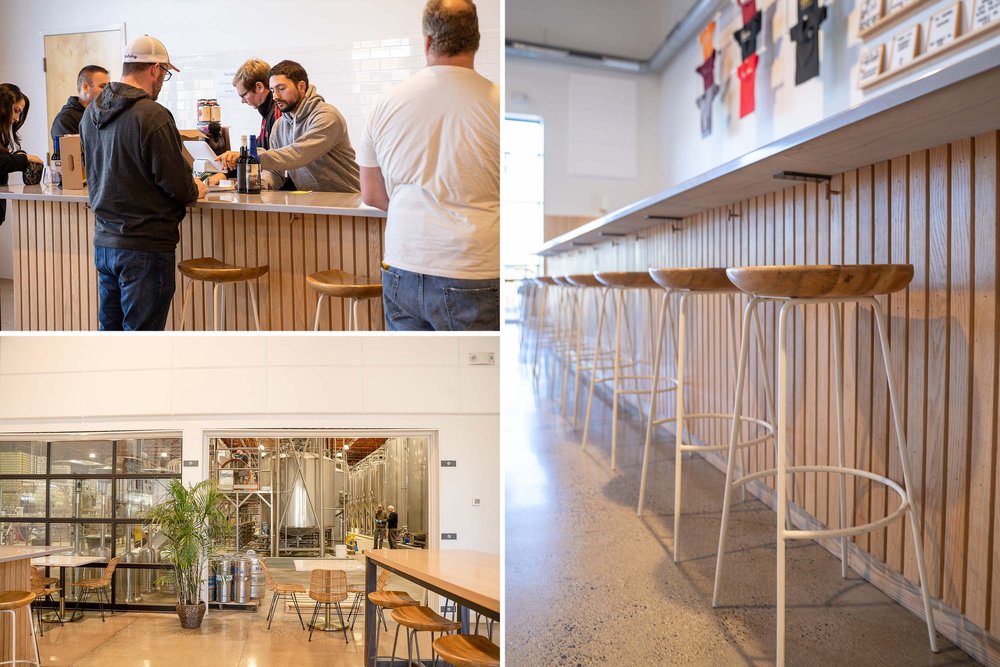
Because of the company’s novel business model, Twelve Percent is able to offer what most other taprooms can’t in terms of variety—and what most beer bars can’t in terms of freshness, considering most of the beer on tap is made on the other side of the wall. It’s important to the company’s co-founders that people can come to one location and try all their different partners’ beer straight from the source. Being able to drink beer from a Connecticut brewery (Fat Orange Cat), an Oklahoma brewery (American Solera), and a Stockholm brewery (Omnipollo) in one place, all fresh from the tanks, seems like some feat of astral projection. It’s a draw very few other establishments can claim, barring other brewing collectives with taprooms like Chicago’s incubator, Pilot Project.
The taproom opened in January 2020, so it only had a couple months of “normalcy” before the pandemic hit. Initially, most visitors seemed to be dedicated beer geeks like the ones I’d observed on my first trip—the kind who had followed Twelve Percent’s hot-stuff portfolio for years and anticipated its opening. Since then, however, the dynamics have changed, and the current crowd seems to reflect a more balanced mix of hype-chasers, locals, and weekend warriors. When I returned to Twelve Percent nearly a year after my first visit, the vibe was decidedly calmer, although it was noon on a weekday this time. Regulars hung out in the minimalist yet inviting interior—done in marble, light wood, and calming neutrals—and sipped Lagers made not by a trendy Swedish brewery but by Twelve Percent itself.


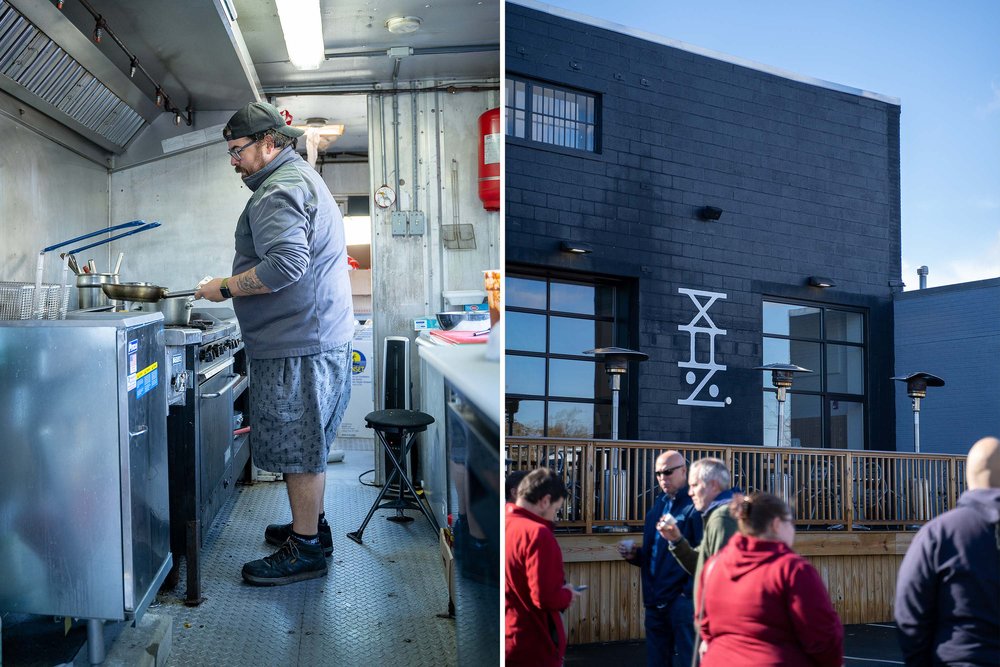
“We have people coming from New York, Boston, and further; they’ll have heard about us and that they have to stop by. But I think we’ve also gotten a lot of people who don’t quite understand what we are,” Blank says with a laugh.
Members of the latter group may raise an eyebrow as neighboring drinkers get deeply involved in photo shoots with their IPAs, but for the most part, they don’t need to get the business model to have a good time. What does it matter when they can get Twelve Percent’s Snappy American Lager or toasty Märzen, plus some fish tacos from its own food truck, Norm’s?
Those Lagers are Twelve Percent’s first house beers. Developed by Ross, The Snappy Lager is on permanent rotation, like an especially easy-drinking counter to some of the bigger, bolder beers on tap at any given time.

“Our partners gravitate toward the hyped stuff, and that’s what sells in distribution,” Blank says. “We’ve got limited tank space and partners competing for that tank space, and they’re making IPAs, etc. But working in a brewery, you can’t drink such big beers regularly. We wanted to make something we could all drink.”
The appeal of such a beer is a no-brainer for everyone who walks through the taproom doors. In my conversation with Paul Pignataro, he also points out that often, what sells in distribution is different than what sells in the tasting room. IPAs, Sours, and Stouts with a smoothie- or milkshake-like consistency and at least four novel ingredients catch eyes on store shelves and drive traffic on social media. That phenomenon is the oxygen that fed the fire when Twelve Percent started working with Omnipollo, Evil Twin, Decadent, and Fat Orange Cat. But people settling onto a barstool or into a comfy couch with friends aren’t necessarily looking to throw back multiple Triple IPAs. Taproom hangs call for laidback Lagers. Now Twelve Percent can address both preferences in both settings.
WATER, MALT, HOPS, YEAST, AND HYPE
With fans come critics. Blank says no one has ever directly expressed skepticism about Twelve Percent to him, but he’s aware of some varying opinions.
“I think most people view us as working with talented people and helping them make their stuff very well, with very good stuff coming out of these doors,” he says. “But I think some people view us as a contract brewery with some of the negative stigmas associated with that.”

Twelve Percent didn’t get the immediate welcome wagon that other, more standard new breweries might, perhaps because its focus isn’t on Connecticut beer alone. The perception among some—that Twelve Percent is just collecting what it views as hot breweries—is what drove me to investigate this piece. From the outside, it isn’t necessarily obvious that these partnerships are the result of friendships, and are driven by an astute understanding of the evolving craft beer culture in the U.S. At first glance, Twelve Percent might indeed look like beer’s version of a TikTok hype house. But there’s more to the story than that.
“The ‘hype’ label applies more now to breweries that self-distribute, like Tree House,” beer and spirits writer and author Aaron Goldfarb tells me during a phone chat. “It’s an inherent fact that something distributed to more consumers becomes less sought-after.” In other words, Twelve Percent’s function in getting small breweries’ beer on shelves throughout the U.S. negates the idea that its mission is to foster hype.

“The paradox of something like Twelve Percent is that it helps create greater accessibility, which in theory helps to grow that community of dedicated fans,” says Porch Drinking founder Tristan Chan in an email. “However, as accessibility increases, it can also drive down the hype associated with the brand, as often these ‘fanboys’ are so fervent because of the rarity involved with limited, small-batch releases.”
If hype does build around a Twelve Percent beer, it’s more likely just the interest in a well-made beer from a creative brewery, contained in an eye-catching can that features instantly recognizable branding. These facets are what Twelve Percent looks for in a brewery, but they’re also key factors in what makes a solid, successful beer business.
“A cult following can just happen with that combination of great beer, great art, great brewer—you can’t decide, ‘We’re going to be great at hyping something,’” says Mullen of Fat Orange Cat. “I’ve seen breweries try to force that and I don’t think it works, it doesn’t feel real. Maybe Twelve Percent has some cult-following beers … but it’s because they’ve got an eye for what’s hot.”
